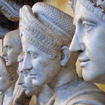Practice and revise question forms 1
Pre-Intermediate level
Materials
Main Aims
-
To provide clarification and practice of question forms in the context of sports.
Subsidiary Aims
-
To provide fluency speaking practice in questions in any context.
Procedure (42-45 minutes)
T welcomes S and exposes them to the context of the lesson. T asks two questions that are visible in the presentation. Questions: Which sports do you play? Why do you play those sports? T uses an ICQ: Are we going to work in groups? Yes. T uses the Breakout Rooms and gives SS a minute or two to answer the questions. T monitors the workgroup and elicits the answers.
T shows three pictures and asks the students to guess what the text is going to be about. The pictures show sports, Olympic Games and Quiz Time. S compare their answers via private messages with their partners. T sends a link [https://docs.google.com/forms/d/e/1FAIpQLSe-yta2yY1vLtoQYl1nZpwc3hh_0l5eUEVPe82ykedFy4m6PQ/viewform] to the Google Forms questions about the sports. T plays the audio and S have to fill in the form individually. S check their answers with their peers via private messages. T shows the slide with the answers and provides an OCFB.
T goes through the slides with the MFPA. T asks questions about their meaning after clarifying the subject. CCQs: When we ask about time, do we use ‘where’ or ‘when’? When. When we ask about a place, do we use ‘why’ or ‘where’? Where. When we ask about a reason, do we use ‘why’ or ‘how many’? Why. When we ask about frequency, do we use ‘why’ or ‘how often’? How often. When we ask about distance, do we use ‘how many’ or ‘how long’? How long. When we ask about the number of things, do we use ‘why’ or ‘how many’? How many. T moves on to the clarification of the Form using a model sentence: Kate and Martin play football and basketball at the stadium on Tuesdays and Thursdays. They play because they like sports. They usually play for 2 hours. T explains the Form asking the students extra questions how to form the question sentences. Asking questions helps T to engage students and see, where they struggle with the TL. T moves on to the pronunciation section. T models the questions and drills it with the students on the forum of the class.
T gives the link [https://docs.google.com/document/d/1Iw6YCc4IulAJ7PG7ppjXc91cc4ghCroJuOUGshptJ5Q/edit?usp=sharing] to the students through the chat. S work individually on the answers. They ask questions in a written form using the TL. The sentences: I go to the cinema twice a week (two times a week). My birthday is in January. There are five people in my family. My parents, two sisters and me. I want to go to the United States next year. I like doing exercises because it is a very important part of my life. He drives to work for about two hours. S compare their answers in pairs. T provides the answers and conducts OCFB.
T moves on to the last slide of the presentation. T asks the students to ask their partners question about their sports life. T gives some indicative questions like: the reasons why they do sports; the place where they play sports or exercise; the frequency of their exercises and what days they do sports; the number of hours they practise every week; the time they have spent on playing sports in their lives. T uses Breakout Rooms so the students have space to talk and discuss the questions. S work in groups asking each other questions. T conducts feedback and Delayed Error Correction.

